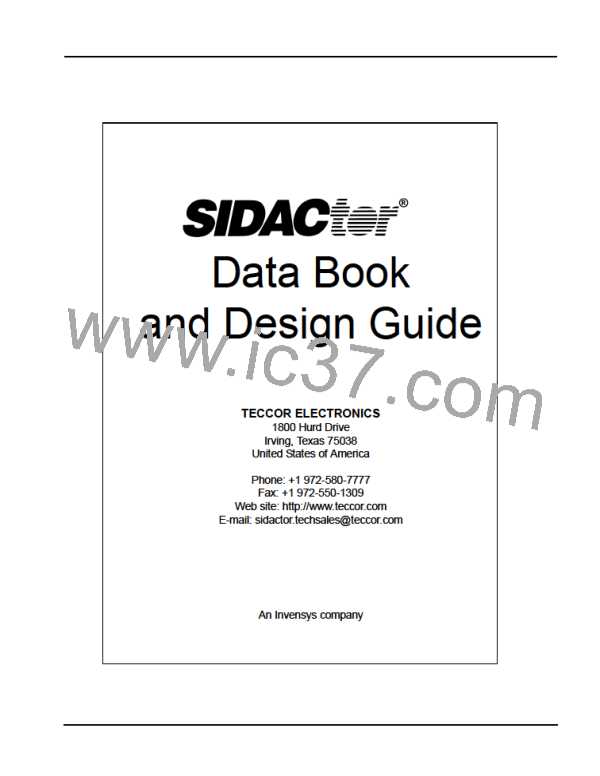SIDACtor Device Selection Criteria
The maximum available surge current is calculated by dividing the peak surge voltage (VPK
by the total circuit resistance (RTOTAL):
)
IPK(available) = VPK/RTOTAL
For longitudinal surges (Tip-Ground, Ring-Ground), RTOTAL is calculated for both Tip and
Ring:
R
SOURCE = VPK/IPK
RTOTAL = RTIP + RSOURCE
RTOTAL = RRING + RSOURCE
For metallic surges (Tip-Ring):
RSOURCE = VPK/IPK
RTOTAL = RTIP + RRING + RSOURCE
Example 1:
A modem manufacturer must pass the Type A surge requirement of TIA-968 (formerly
known as FCC Part 68) without any series resistance.
I
PK = 100 A, 10x560 µs
IPP O 100 A, 10x560 µs
Therefore, either a “B” rated or “C” rated SIDACtor device would be selected.
Example 2:
A line card manufacturer must pass the surge requirements of GR 1089 with 30 ꢂ on Tip
and 30 ꢂ on Ring.
I
PK = 100 A, 10x1000 µs
PK = 1000 V
SOURCE = VPK/IPK = 10 ꢂ
V
R
RTOTAL = RSOURCE RTIP = 40 ꢂ
+
IPK (available) = VPK/RTOTAL = 1000 V/40 ꢂ
ꢃ IPP O 25 A
Holding Current (IH)
Because TIA-968 4.4.1.7.3 specifies that registered terminal equipment not exceed
140 mA dc per conductor under short-circuit conditions, the holding current of the SIDACtor
device is set at 150 mA.
For specific design criteria, the holding current (IH) of the SIDACtor device must be greater
than the DC current that can be supplied during an operational and short circuit condition.
http://www.teccor.com
+1 972-580-7777
5 - 6
© 2002 Teccor Electronics
SIDACtor Data Book and Design Guide
®

 TECCOR [ TECCOR ELECTRONICS ]
TECCOR [ TECCOR ELECTRONICS ]